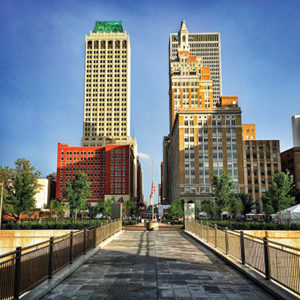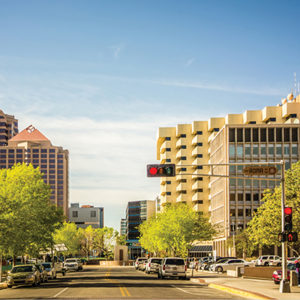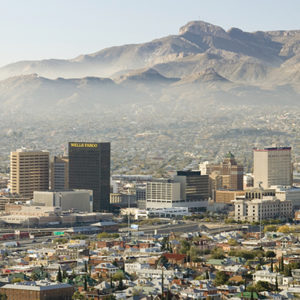There are hundreds of “best of” lists when it comes to cities. Just Google “best cities list 2018,” and 471,000 results pop up. One list that’s, um, rising to the top is Resonance Consultancy’s rankings of America’s Best Cities. The recently released 2018 ranking is the second annual report Resonance has published to “quantify and benchmark the relative quality of place, reputation, and competitive identify for America’s large and small cities,” according to Resonance President and CEO Chris Fair.
For the rankings, the 10-year-old firm, which specializes in tourism, real estate, and economic development, collects a wealth of public data on big and small U.S. cities, focusing on 27 criteria. Among them are stats on such things as crime rates, entertainment offerings, cultural offerings, and economic vitality — factors which directly or indirectly impact site selection decisions for events. In addition, the company analyzes user-generated ratings and reviews in digital channels such as TripAdvisor to come up with the rankings.

Convene asked Fair to take a look at the Best Small Cities — which the company defines as metropolitan areas with more than 200,000 but less than 1 million population — through the lens of business events. His insights point to the intersection of business travel, tourism, and economic development, and underscore that when making a decision whether to become a resident of a city or just to travel there for pleasure or an event, many of the same things matter.
America’s Best Cities benchmarks the performance of a city across three dimensions: place to live, place to visit, and place to do business. Does that last piece include conferences and conventions?
The factors that we looked at are really in terms of investment more so than conferences and meetings, but I think there is strong alignment and overlap. We found between tourists, in terms of what they consider important in choose in a city to visit, and business leaders, in terms of factors they consider important in choosing a place to do business, that the one main overlapping factor was an exciting city environment.
My observation, and I work in tourism planning and development, is that historically for meetings and events, it would have been more about what’s inside the box, in terms of the package for the event space, hotel, all of that, and now the equation has maybe flipped a little bit and it’s more about what’s around and outside the box in terms of determining where people want to have meetings and conventions.
Besides university rankings and the number of Fortune 500 companies in each city, were there any other ways you measured a destination’s knowledge economy, like if it has a strong start-up or tech community?
For the purposes of the Best Cities rankings, it’s only those factors. When we do economic-development and tourism strategies we do look at additional factors such as that. And I think what we’ve found is in terms of innovation, we can look at patents or we can look at knowledge workers, there’s all different kinds of factors that we benchmark when we do economic development strategies. But those factors don’t really shape perception so much and influence the decision about a place to visit or place to live or a place to do business. People just aren’t aware. If I asked, “What are the top five cities that have issued the most patents in the last five years?,” I don’t think anybody would even be able to answer that question. So while that data is important in terms of strategy development, they’re not necessarily factors that shape and influence perception.
Getting back to your consulting work with cities, are CVBs at the table during those economic development/ destination-branding conversations?
It depends. In some cases, yes. I think in most places, tourism and economic development are quite separate from one another. I think the trend moving forward — and you see this a lot more in Europe than you do in North America — is a stronger integration between tourism and economic development from a positioning, branding, marketing, and management point of view, because I think economic-development organizations are really realizing that tourism DMOs or CVBs understand marketing.
So I think that’s kind of an example of where things are heading and that we’ll see more integration. I think tourism is realizing that they need to be telling a broader story, it’s not just about putting heads in beds anymore, it’s more about thinking about the destination, managing the overall quality of the experience, and striking that balance between heads in beds and quality of life for local residents, and economic development. So it’s becoming a lot more complex in terms of the role that those CVBs can and should be playing.
Are there any other examples of cities that you’ve worked with that are doing a really good job of integrating those entities?
Yeah, I think you can look at London & Partners as kind of a large-scale example that has really integrated economic development and tourism into one organization. Lyon, France, I think is another great example. They looked at [things] a decade ago, where they had a dozen different organizations showing up and pitching different aspects of the city. They realized that there were a lot more synergies to working together and creating one organization — that all of these groups put funding into creating one brand, one platform, and some consistent messaging.

There are relatively few in North America, I think. We just recently worked with the Tulsa Regional Chamber of Commerce, and Visit Tulsa is an entity within that chamber of commerce. I think they’re naturally integrated, and we were able to work with them on what we call the destination-development strategy that looked at the city not just as a place to visit but as a place to live and as a place to do business, to identify and develop a positioning strategy and a series of recommendations. Some were maybe tilted more towards economic development and some were tilted more towards housing attraction, some were tilted more to tourism — but they all had an underlying focus of how might this investment or activation not only achieve that objective but enhance quality of life for local residents, which is a big part of our philosophy and mantra.
In any of these [cases], you need to also be thinking about how they hopefully don’t have a negative impact, or at least be neutral — but hopefully have a positive impact towards quality of life for the community.
We’re becoming a more urbanized society, and I’ve seen studies that say that millennials prefer to live in cities. How is that having an impact on cities’ economic-development plans?
I think there are a couple of things there. Yes, we’re becoming more urbanized but it’s not just young people — and our research actually shows it’s almost an even split amongst millennials who would like to live in the suburbs versus those who’d like to live in urban centers. But I think what is happening is we’re now seeing the urbanization of the suburbs in terms of a focus on walkability and other [kinds of community] developments.
But overall I think that these things all work together, which is really the philosophy and focus of our company. We work in tourism, we work in economic development, and we work in real-estate development. And the reason we work in those three sectors is because we think those are the three that have historically been separate silos but are now much more interdependent on one another. You don’t get the economic development you’re looking for without the urbanization and the real-estate development and increased density. And you don’t get the tourism that you’re looking for without that vibrancy. And you don’t get the meetings and conventions if you don’t have the leisure tourists that help create the vibrancy. And so there’s a lot more interconnection between all of these areas that we think are important to consider as we think about the future posterity of places.
From your perspective, what advantages do smaller — what we call second-tier — cities have in attracting business events?
There is a real trend and a real opportunity for some of these smaller cities to see some significant growth in the meetings and events business. And the reason I say that is, for delegates going to meetings and events, it’s not just about the meeting, it’s also about experiencing the place. And so many of the convention centers in the larger cities that we’ve built are isolated islands really cut off from the fabric of the urban environment.
So when people are thinking about having a meeting or event, if it’s not a 10,000-person conference that just absolutely has to be in one of those big boxes, there are a range of alternatives, and I think more and more interest in going to second-tier places that are more integrated into the urban fabric, which adds up to maybe a bigger experience for the people who attend. So I think we’re going to see some interesting developments around convention center design and development in the so-called second-tier cities that have a lot of opportunity.
And part of that I think is also driven by, in the larger cities that have good convention centers, more global meetings and events are maybe pushing out some of the smaller associations and organizations — both just in terms of availability and in terms of pricing. So there’s going to be a tendency to look towards better value and better experiences for domestic meetings.
To download Resonance’s free reports — including America’s Best Cities Report, the 2018 World’s Best Cities Report, and the 2018 Future of Millennial Travel Report — visit resonanceco.com/our-reports/.
Small Is the New Big America’s Top 10 Small Cities, according to Resonance: 1 Honolulu, 2 Omaha, 3 Albuquerque, 4 Charleston, 5 El Paso, 6 Reno, 7 Tulsa, 8 Madison, 9 Myrtle Beach, 10 Asheville
Test Time
Earn one clock hour of certification credit by reading this story and sidebars, and reading a Destinations International EmpowerMINT blog post, “1st, 2nd, 3rd Tier Cities: What Do the Designations Really Mean?” at blog.empowermint.com/article/meeting-destination-tiers/.
To earn certification clock hours, visit pcma.org/convene-cmp-series to answer questions about information contained in this CMP Series article and the additional material.
The Certified Meeting Professional (CMP) is a registered trademark of the Events Industry Council.









